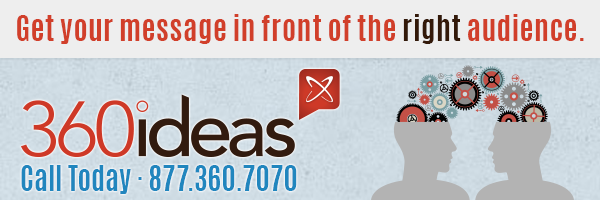A Practical Guide to Boosting Healthcare Efficiency with IT Solutions

In today’s fast-paced world, healthcare organizations are under constant pressure to provide high-quality patient care while optimizing operational efficiency. Integrating IT solutions into healthcare systems is one of the most effective ways to meet these demands. From improving communication between medical professionals to streamlining administrative tasks, healthcare IT can transform the way facilities operate. In this guide, we will explore how healthcare organizations can leverage IT solutions to boost efficiency.
1. Streamlining Laboratory Testing with Advanced Software
One of the most critical areas of healthcare that benefit from IT integration is laboratory testing. Managing lab orders, results, and patient records manually can lead to delays, errors, and inefficiencies. By implementing advanced laboratory testing software, healthcare providers can streamline these processes, reduce errors, and improve overall accuracy. When speaking about genetic test ordering software, allows healthcare providers to quickly and accurately order, track, and interpret genetic tests. This type of software automates much of the administrative workload associated with lab testing, ensuring that the correct tests are ordered, results are tracked efficiently, and data is easily accessible for both clinicians and patients. The reduction in manual tasks not only boosts efficiency but also minimizes the risk of human error in testing and reporting.
2. Enhancing Patient Data Management with EHR Systems
Electronic Health Record (EHR) systems have revolutionized the way healthcare providers manage patient data. EHRs allow for the secure and efficient storage of patient information, including medical history, test results, diagnoses, and treatment plans. These systems enable quick access to patient records, making it easier for healthcare professionals to make informed decisions and provide timely care.
Moreover, EHR systems reduce the need for paper-based records, which are prone to errors, misplacement, and duplication. By centralizing patient data in a digital format, healthcare facilities can improve data accuracy, facilitate smoother communication between departments, and enhance overall workflow efficiency. EHR systems can also integrate with other IT solutions, further boosting the capability of healthcare providers to manage patient care seamlessly.
3. Improving Communication with Telemedicine Platforms
Telemedicine has gained significant traction in recent years, especially with the rise of remote care during the COVID-19 pandemic. Telemedicine platforms enable healthcare providers to offer consultations, follow-up appointments, and even diagnostic services remotely. This technology not only improves patient access to care but also helps healthcare providers manage their time more effectively.
By using telemedicine solutions, healthcare facilities can reduce the need for in-person visits for routine consultations, freeing up resources for more critical cases. Patients benefit from the convenience of accessing healthcare services from their homes, while providers can expand their reach and accommodate more patients without sacrificing quality of care. The integration of telemedicine platforms with EHR systems and other IT solutions further enhances communication and continuity of care.
4. Automating Administrative Tasks with AI and Machine Learning
Administrative tasks such as appointment scheduling, billing, and claims processing can be time-consuming and prone to errors when done manually. Automation through AI and machine learning tools can significantly improve the efficiency of these processes. For example, AI-powered scheduling systems can automatically optimize appointment bookings based on provider availability, patient preferences, and urgency of care.
Machine learning algorithms can also streamline the billing process by automatically detecting coding errors, verifying insurance claims, and reducing the time it takes to process payments. By reducing the burden of administrative tasks, healthcare providers can allocate more resources to patient care and minimize the risk of financial errors that could disrupt operations.
5. Enhancing Diagnostic Accuracy with AI-Powered Tools
Artificial intelligence is playing an increasingly important role in healthcare diagnostics. AI-powered tools can assist medical professionals by analyzing complex data sets, identifying patterns, and offering diagnostic insights. These tools can be particularly helpful in areas such as radiology, pathology, and genetic testing, where large amounts of data need to be processed quickly and accurately.
For example, AI-based image recognition software can analyze medical images, such as X-rays or MRIs, and detect abnormalities that might be missed by the human eye. Similarly, AI algorithms can help identify genetic mutations that may indicate a predisposition to certain diseases. By leveraging AI in diagnostics, healthcare providers can improve diagnostic accuracy, speed up decision-making, and enhance patient outcomes.
6. Safeguarding Patient Data with Cybersecurity Solutions
With the rapid adoption of IT solutions in healthcare, ensuring the protection of sensitive patient data has become a top priority. Healthcare facilities are prime targets for cyberattacks, given the wealth of personal, financial, and medical information they store. A breach of this data not only jeopardizes patient privacy but can also compromise the integrity of medical records, disrupt operations, and lead to legal and financial consequences. Therefore, implementing robust cybersecurity measures is essential to safeguard both patient data and the healthcare system's integrity.
To mitigate these risks, healthcare organizations must adopt a multi-layered cybersecurity approach. This starts with strong encryption protocols, which ensure that sensitive data is securely transmitted and stored. Encryption helps protect patient records even if hackers manage to gain unauthorized access to the system. Multi-factor authentication (MFA) is another critical security measure that adds an additional layer of protection by requiring multiple credentials for access, reducing the risk of unauthorized entry.
Regular software updates and patch management are also vital components of healthcare cybersecurity. Outdated software can contain vulnerabilities that cybercriminals can exploit. By keeping systems up to date and addressing known security weaknesses, healthcare organizations can reduce their susceptibility to cyberattacks. Additionally, implementing firewalls, intrusion detection systems, and anti-malware solutions are key strategies for monitoring and protecting networks from potential threats.
Human error is often a significant factor in data breaches, making it essential for healthcare institutions to invest in continuous staff training on cybersecurity best practices. Employees should be educated on recognizing phishing attempts, using secure passwords, and following proper data handling procedures. Regular training sessions can help staff stay vigilant and prepared to avoid common security pitfalls that could lead to a breach.
Integrating IT solutions into healthcare operations is no longer optional but essential for improving efficiency, enhancing patient care, and staying competitive in the modern medical landscape. Healthcare providers have a wide range of tools at their disposal to streamline processes and deliver better care. By adopting these technologies, healthcare organizations can not only boost their operational efficiency but also improve the quality and accessibility of care for patients.



